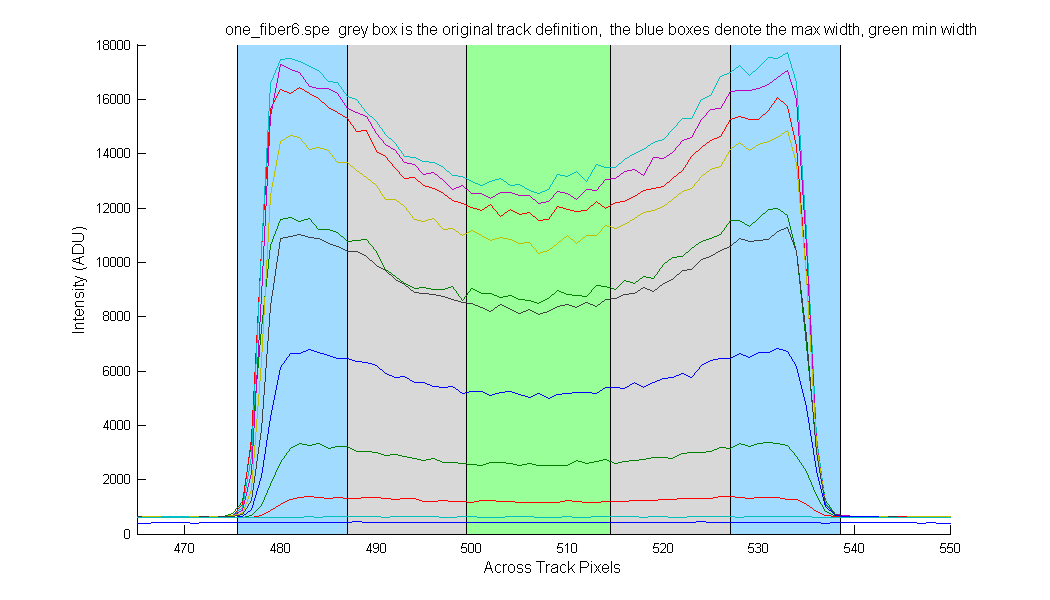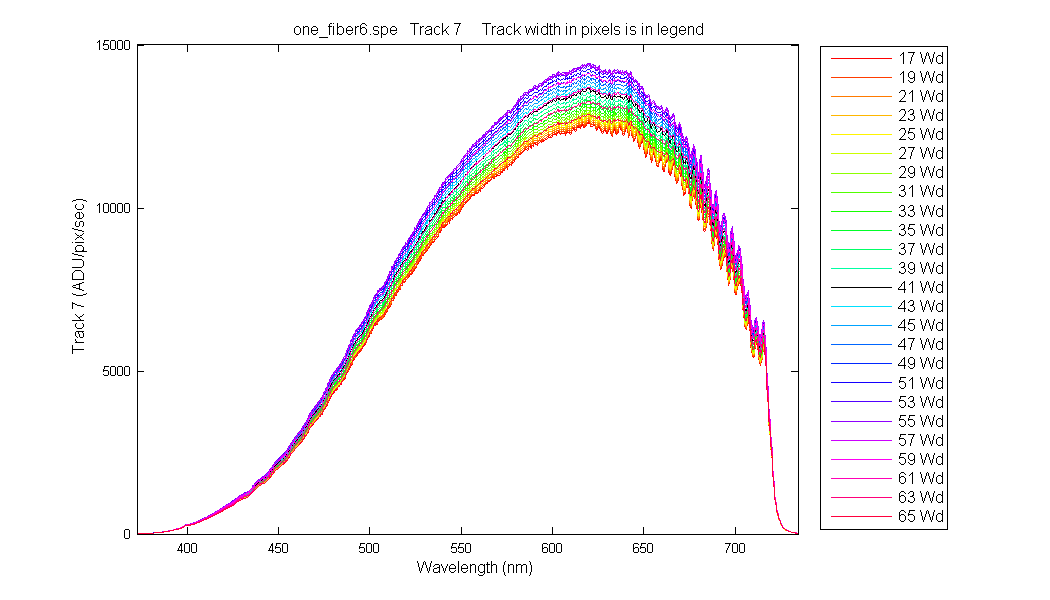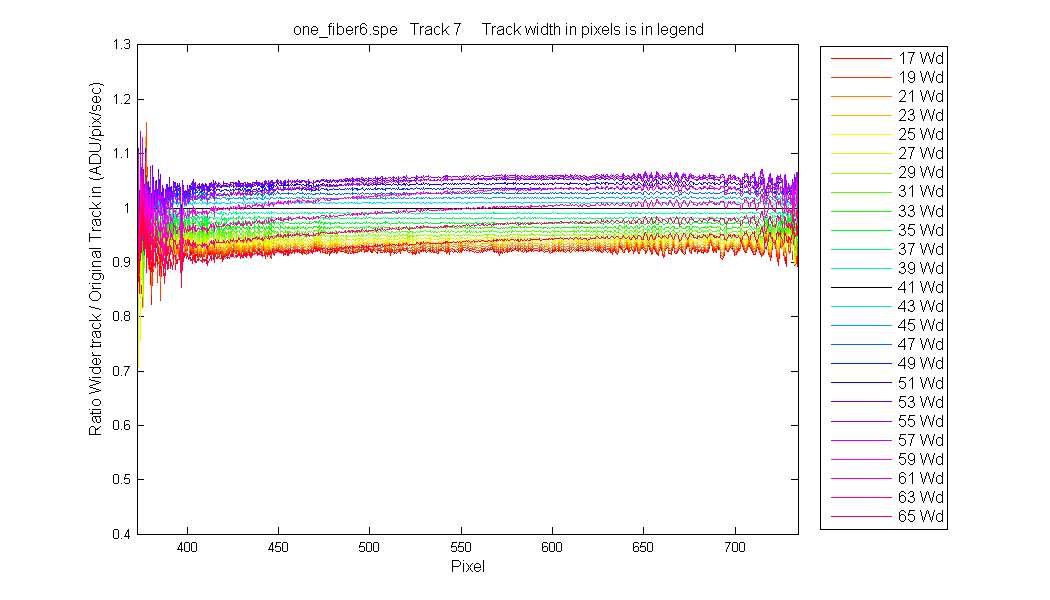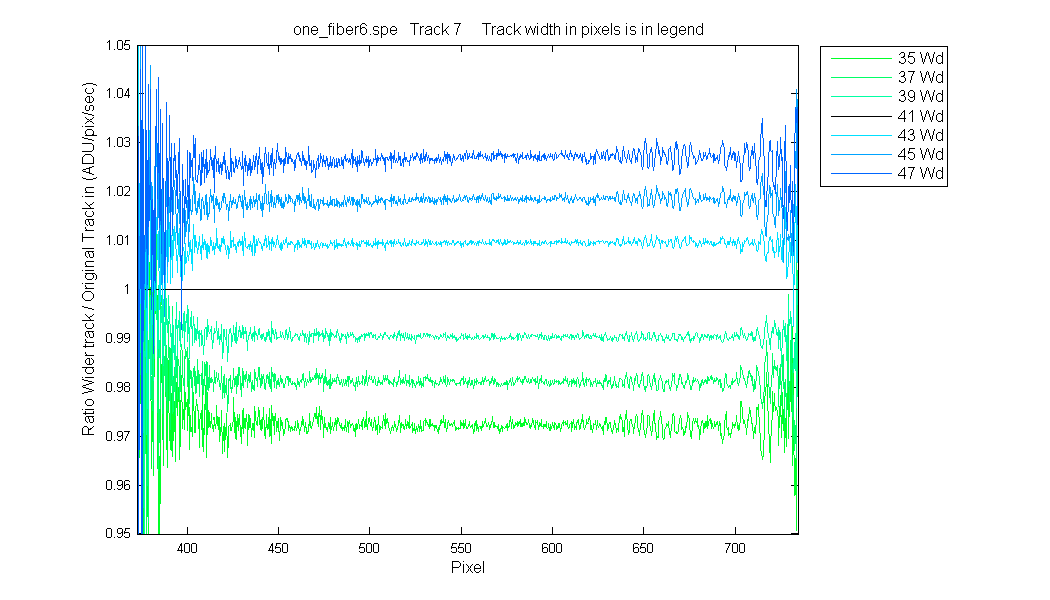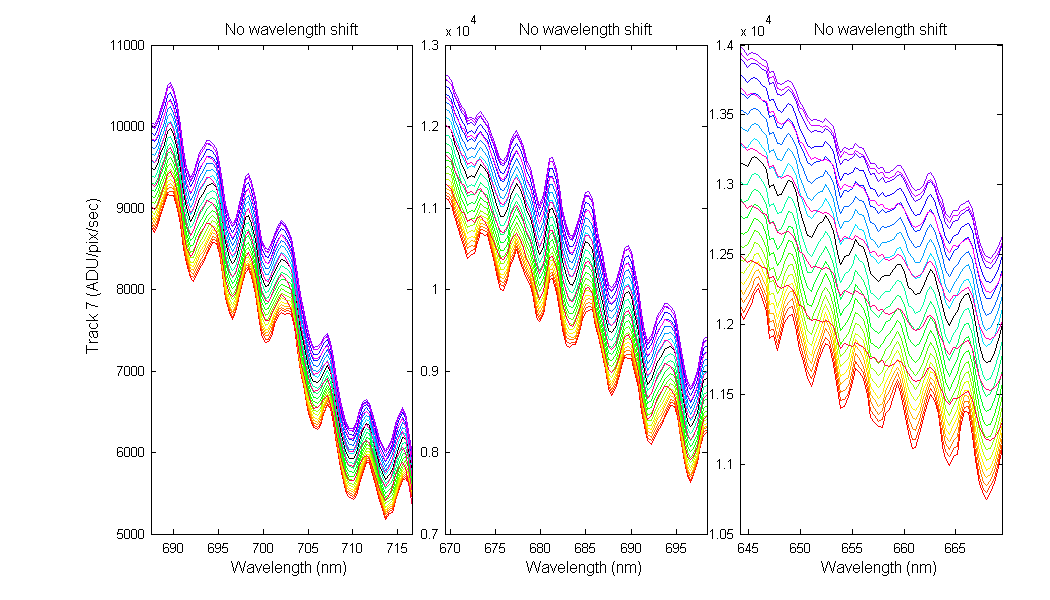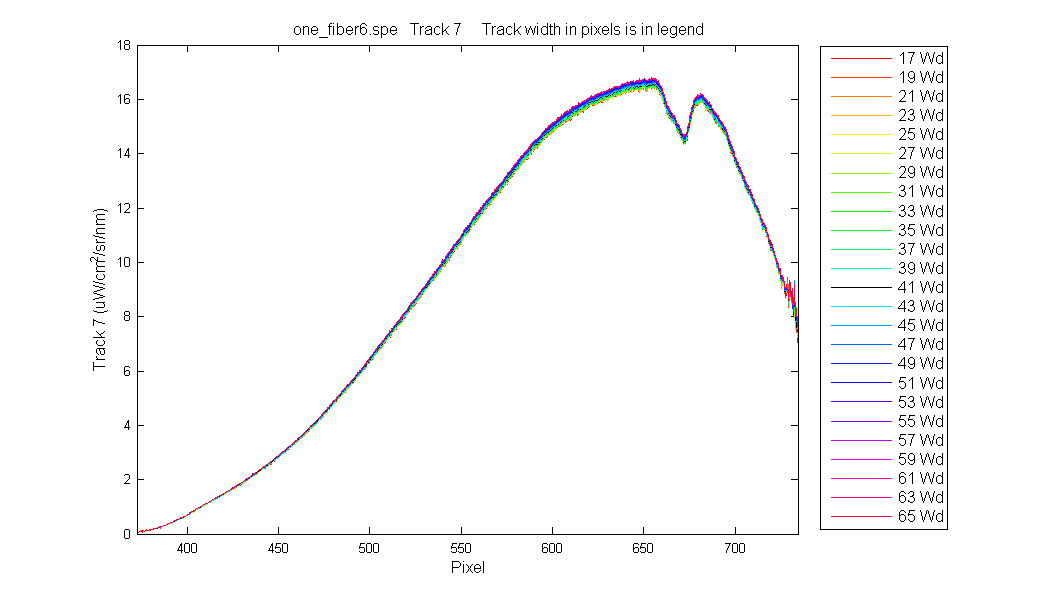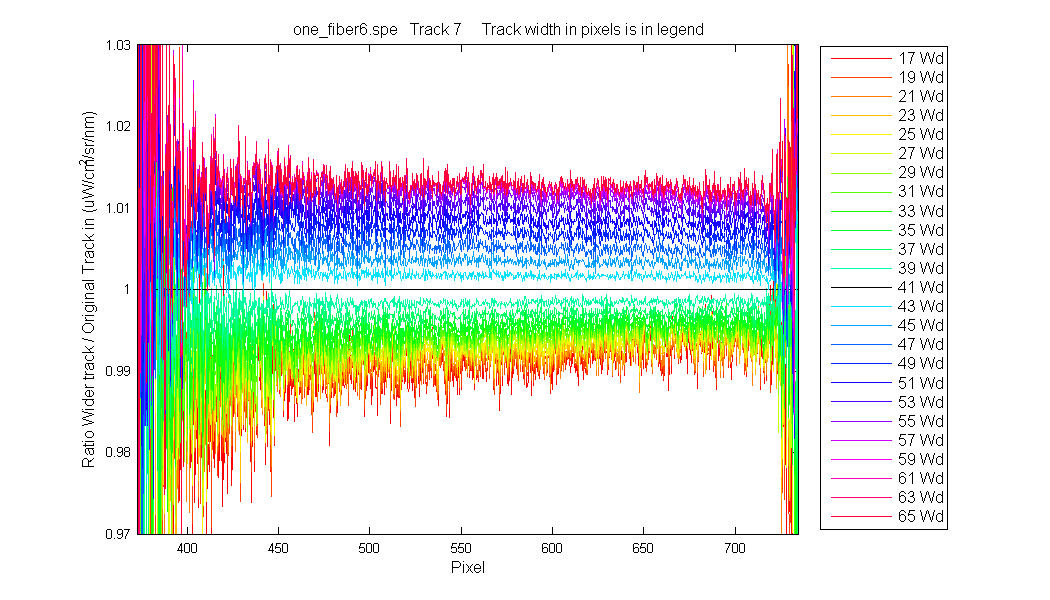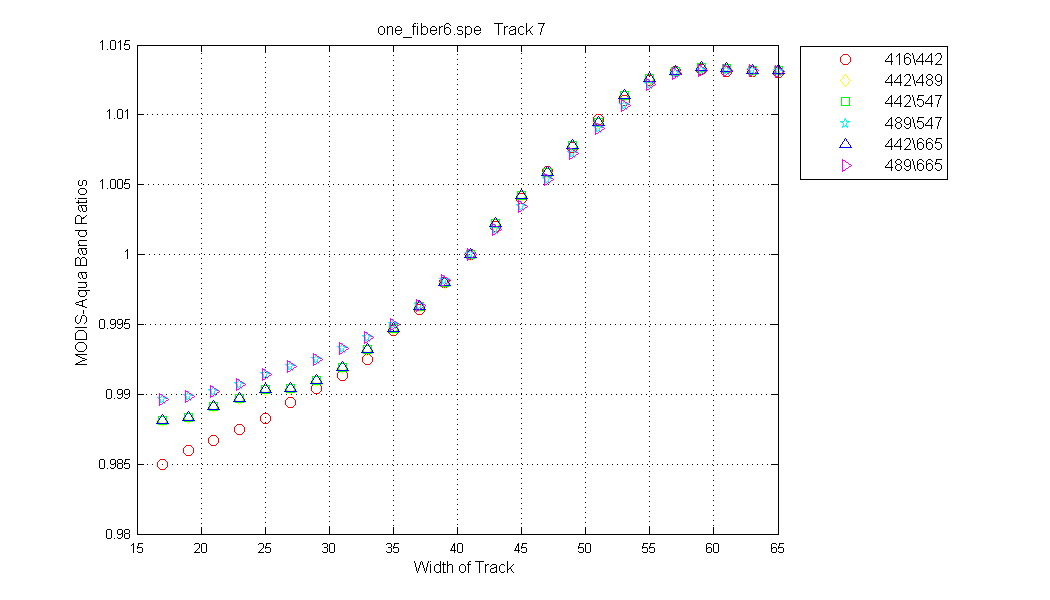The following graphs try to show the effect of changing the width of the track. How much does the signal change depending on were you defined the track. In this page the track widenedbut the center pixel was not changed. The width of the track is in the legend. Because of the large width variation, this means that in the extreme cases the tracks were in the dark area between the tracks. Note that all the graphs are for track 7 were there is very little keystoning. I should repeat this for track 1 or 2.
The first four graphs show the problem in ADU/pix/sec. The variability is pretty high. Also notice on the fourth graph I have zoomed in to sections the same as I did on exp num 4.51. Note in this case you do not see any wavelength shifting going on.
I then show the same graphs with a system response applied. I created a system responce for each shifted track so that the system response was created with the same track definition as the data. Much of the variability is gone once the system response if applied. But it is more variable than Exp Num 4.51.
Al Parr asked what the effects would be in satellite ratios so I did graphs of that too. The last graph show the change in satellite ratios for MODIS-Aqua. The width of the track is the x-axis.
